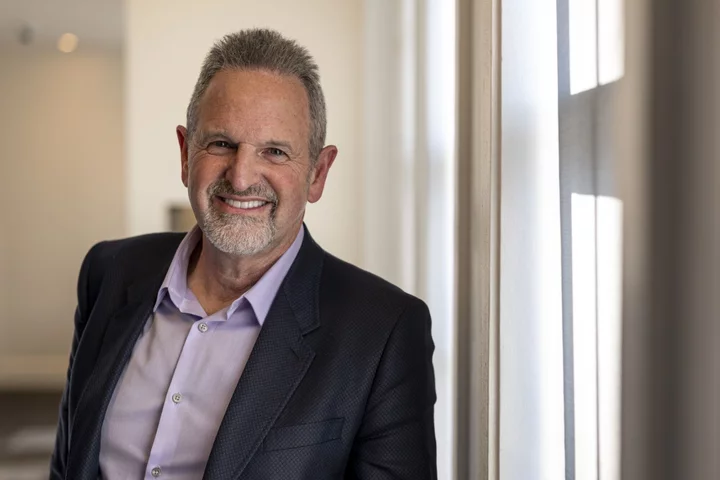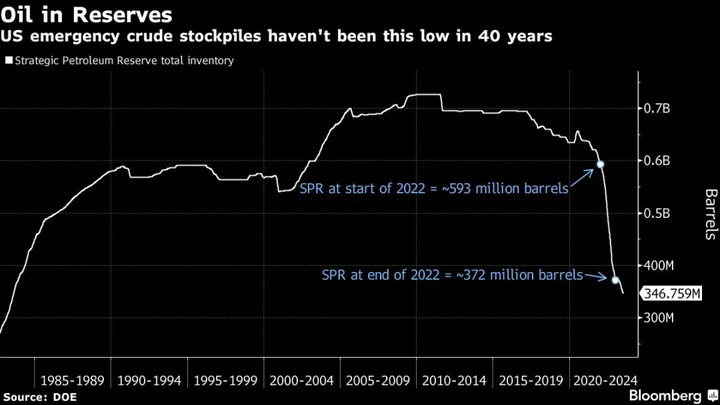On a remote peninsular of Scotland, there’s an experiment underway to put a dollar value on nature restoration — the first step to turning stunning landscapes around the world into assets that some investors hope will soon be worth fortunes.
Visual media produced in partnership with Outrider Foundation
Photographs by Lorna MacKay
Highlands Rewilding earlier this year bought a 1370-hectare estate called Tayvallich on a tongue of land on the country’s west coast for £10.5 million ($13 million). The company plans to restore native fens, juniper heath and fragments of temperate Atlantic rainforest that have been lost due to decades of overgrazing by sheep and deer. Funds for the project were gathered together from varied sources — there’s Boston-based MFS Investment Management and wealthy individuals, but also small-time investors from a crowdfunding campaign and a £12 million loan from the UK Infrastructure Bank.
Once the recovery is underway, a team of ecologists will use tools such as environmental DNA sampling and camera traps to measure improvement in the state of the land and its inhabitants. That delta will be packaged into a security called a biodiversity credit, which can be bought by companies that want to show they’re making a positive contribution to the planet or offset any damage caused elsewhere by their operations.
Everyone involved is betting Scotland will soon pass a law that forces companies to make up for their environmental impact by funding protection elsewhere. Similar regulation was due to enter effect in England later this year, but has been delayed. They’re also eyeing a global, unregulated market for the credits that’s gotten a boost from a commitment by almost 200 countries to halt and reverse biodiversity loss by 2030, and new guidelines for business to address nature-related risks.
Still, it’s early days and the true potential for the market remains unclear. Fintech firm CreditNature forecasts it could be worth up to $35 billion by 2050, while Inevitable Policy Response, a think tank, expects it to be closer to $18 billion per year.
“We’re right on the frontier operating with huge uncertainties,” said Jeremy Leggett, chief executive of Highlands Rewilding, which owns two other estates in Scotland that are embarking on similar projects. He’s already signed an agreement to supply credits to a European firm, which he declined to identify. “The good news is that one struggles these days to find anybody who doesn't think this brave new world is coming.”
Leggett set up Highlands Rewilding in 2020 with proceeds from the sale of Solarcentury, a company he founded in the 1990s that became one of the UK’s largest solar panel providers. He likens the opportunities in what he calls the “nature recovery industry” to the nascent renewables sector 30 years ago. “It feels like groundhog day,” he said.
‘Green Lairds’
The entrepreneur joins a growing body of environmentally-minded businessmen, often dubbed “green lairds” by locals, buying estates in Scotland to profit from the so-called natural capital generated from rewilding projects. The country is considered a prime location for such ventures because decades of sheep farming, deer hunting and grouse shooting have left land that was once home to the ancient Caledonian Forest overgrazed and barren.
Most of the other projects that have sprung up in recent years, including land bought by Aviva Plc, Standard Life and beer firm Brewdog, as well as Danish billionaire Anders Holch Povlsen, have been dedicated to growing trees or restoring peatlands to generate carbon credits, used by companies to offset their greenhouse gas emissions. Leggett is among the first to venture into biodiversity credits.
In neighboring England, biodiversity credits are created using a government-devised metric that includes factors such as the type of habitat, its condition and the likelihood that rejuvenation will be achieved. Leggett says he’s in touch with policymakers in the Scottish government and thinks the approach north of the border will be broadly similar.
Read More:
- These Trees Are Not What They Seem
- This Timber Company Sold Millions of Dollars of Useless Carbon Offsets
- Junk Carbon Offsets Are What Make These Big Companies ‘Carbon Neutral’
- UN Says New Biodiversity Credits Can Succeed Where Carbon Offsets Failed
Others are skeptical that the biodiversity credits market can gain traction and that it won’t face the same problems as carbon offsets, which are much more widespread. Three decades after the carbon market was set up, it’s still plagued with questions over whether the credits deliver on their promised climate benefits. Multiple cases have emerged of companies manipulating baselines or claiming credits for forests that were never threatened.
Biodiversity is also more complicated to measure. Unlike a molecule of carbon dioxide that’s the same wherever it’s found, the very diversity that makes these natural assets valuable also makes them less fungible. “Convincing a manufacturer in the north of England that they should buy a biodiversity credit generated in Mexico will not work,” said Bill Gilbert, managing director at NatWest Markets Plc, adding that he hasn’t seen much demand for biodiversity credits in general.
Highland Clearances
It’s also uncertain whether and for how long such projects can retain the support of nearby communities. Highlands Rewilding is among a cohort of companies that has faced pushback from locals, campaigners and policymakers who argue that the businessmen purchasing land for rewilding projects are pushing up costs and pricing out residents. It’s a particularly contentious topic in Scotland, where wealthy landowners forcibly removed people from their land in the 18th century to make space for lucrative sheep farming, a period known as the Clearances.
To this day, the country has the most concentrated pattern of land ownership in the developed world, with about 400 people or companies — less than 0.01% of the population — in possession of half of the country’s privately-owned land, according to the latest available data. Even if their intentions are good, the environmental entrepreneurs who want to rewild Scotland are often seen as a continuation of the trend of outside money buying up land to make profits that won’t be shared with local people.
“Whether around the move to sheep and then the move to deer and the move to trees and the move to renewables, Scotland's land has always been seen as an open book,” said Ailsa Raeburn, chair of Community Land Scotland, an organization for community landowners.
The Scottish government has tried to reverse the trend by passing legislation that gives local groups first refusal over plots of land that come up for sale and access to grants of up to £1 million if they want to make a purchase. But the recent nature-driven frenzy for land is pushing prices to a level that communities can’t afford. The average price of an estate in Scotland has risen 193% since 2019, according to BNP Paribas SA’s real estate arm, Strutt & Parker. Around one in three deals takes place off market, making it hard for locals to get organized in time.
Residents of Tayvallich village, home to a declining population of about 100 people, had a plan to buy some of the 13 plots for sale to build houses with affordable rent, but all the land went to Highlands Rewilding instead. Tenants and employees of the estate were concerned they’d lose their homes and jobs.
Leggett has tried to reassure locals by signing an agreement with a community group that includes a no-eviction policy for tenants and provisions for local jobs. He’s pledged to ensure any houses built or sold on the land are primary residences, rather than second homes or tourist accommodation, and to involve the local community in new policies and business plans, though they won’t have veto rights. The community group has also secured a commitment from Highlands Rewilding to sell some houses and land back to them at cost, and recently raised £565,000 from the Scottish Land Fund to fund the project.
“The sentiment is ok for now, but it’s early days,” said Angus Shackleton, a 30-year-old employee of the local cafe who was born and grew up in the village. He’s seen his friends leave for university and never come back, driven away by declining jobs in forestry, fishing and farming, and house prices inflated by a lack of supply and an influx of holiday homeowners. Tayvallich’s only primary school has 20 pupils, down from twice that number a decade ago. The pre-school is even smaller, with just two children.
“So far so good, but the verdict’s not in yet,” said Nicholas Mes, a South African who moved to Tayvallich almost a decade ago and now runs the village shop. “Time will tell,” said Mandy Crompton, a self-employed administrative assistant who moved to the village about 35 years ago and represents a community initiative on Highlands Rewilding’s local management board.
‘High Degree of Risk’
The sense of caution is shared by Andrew Thin, chair of the Scottish Land Commission, who’s concerned that the speculative nature of the Highlands Rewilding project may expose locals to financial risks. The company’s business model “involves significant capital gearing and unusually speculative income forecasts,” Thin wrote in a letter to Leggett leaked on social media. This implies “a high degree of risk not just for Highlands Rewilding, but also for the communities and employees that depend on you.”
Leggett is undeterred. He’s hired scientists to start collecting data across the firm’s three estates to record baselines against which any improvement will be measured. This includes field observations, acoustic monitoring, environmental DNA sampling and setting camera traps. Highlands Rewilding is hoping to be able to sell any intellectual property and technology the team develops in the process, contributing to its projected £100 million in total revenue over the next decade. Biodiversity credits, generated from the company’s own estates as well as those it hopes to eventually manage for other people, are expected to generate about £70 million.
Leggett acknowledges his business model is “a punt” on governments seeing through the land use change needed to reach their net zero and nature protection targets, but it’s a punt he thinks is worth pursuing. “You’ve just got to do the best guesstimating that you can until the policy regime descends,” he said. “I'm very bullish.”
Visual media produced in partnership with Outrider FoundationPhoto Editing by Jody Megson









